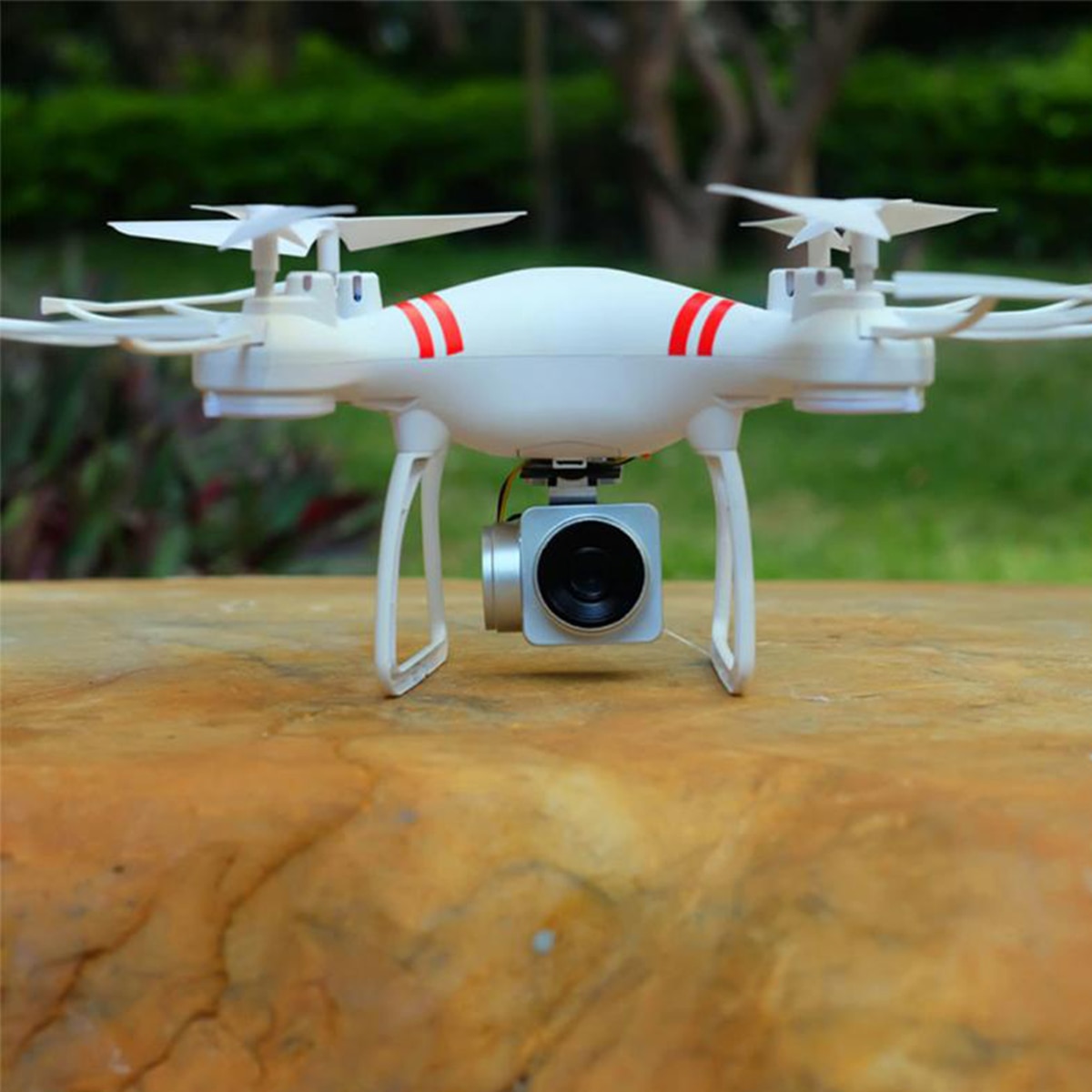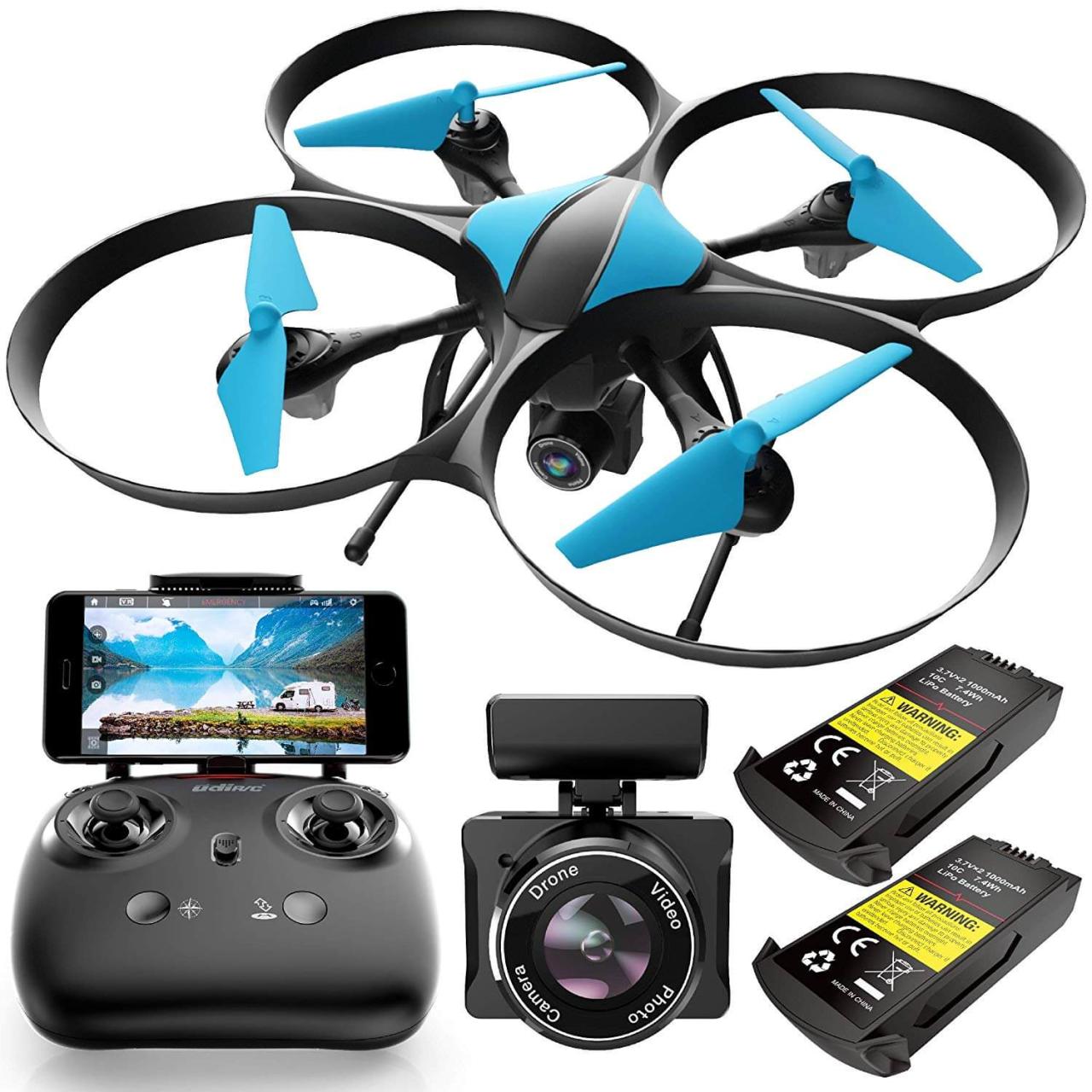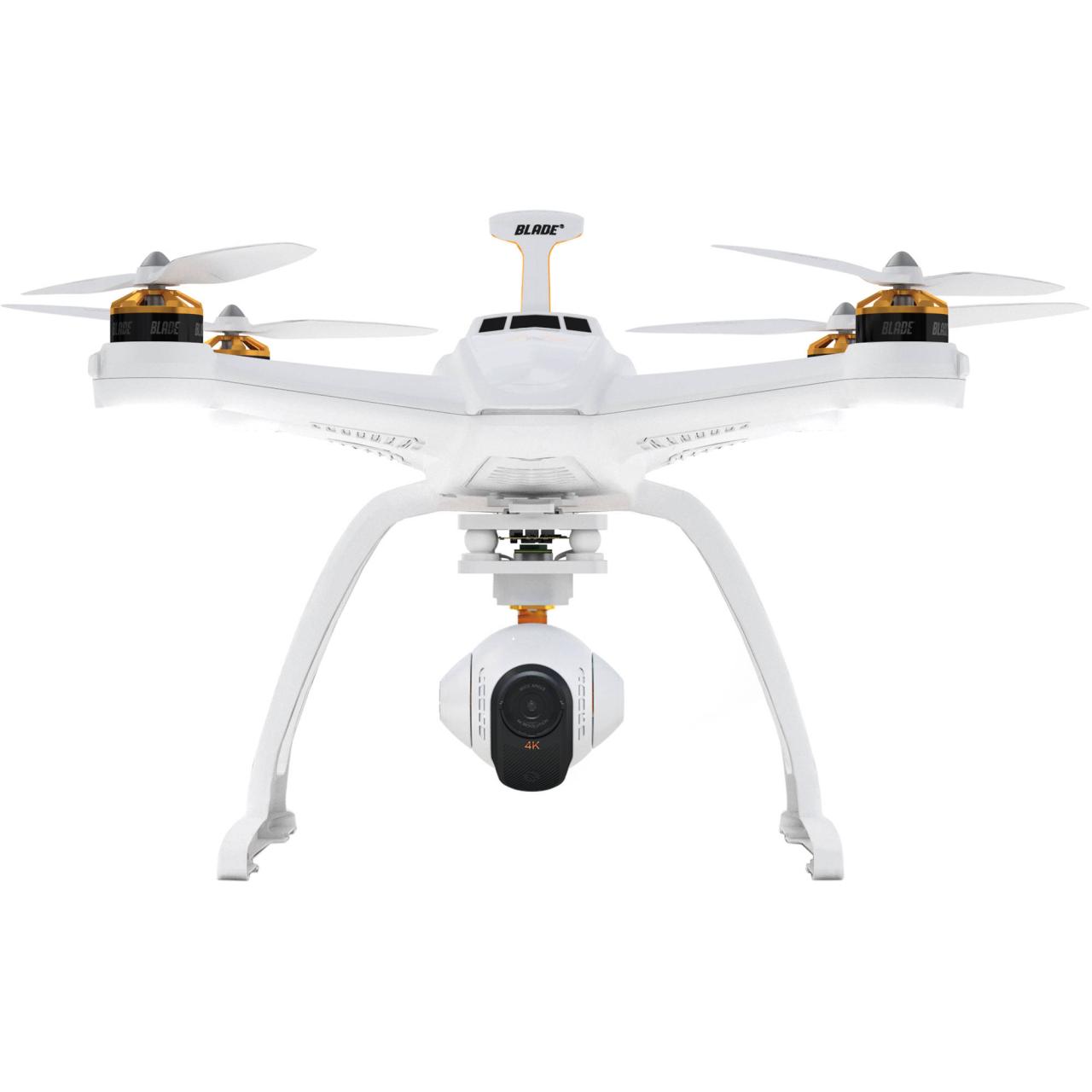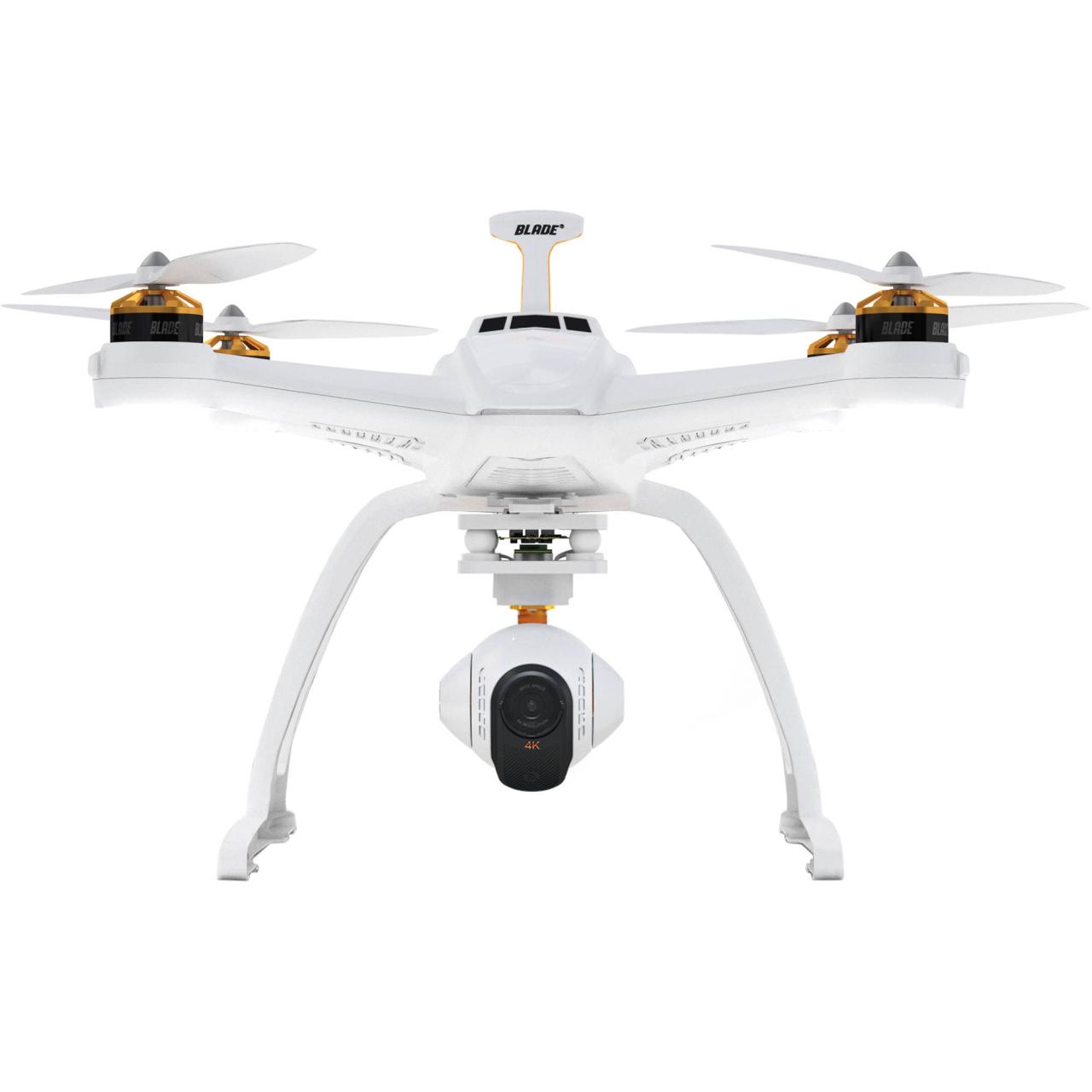Drone with camera technology has revolutionized various sectors, from filmmaking and construction to agriculture and surveillance. This sophisticated technology combines the aerial capabilities of unmanned aerial vehicles (UAVs) with high-resolution imaging systems, enabling unprecedented perspectives and data acquisition. This guide delves into the diverse types of drones available, exploring their camera capabilities, technological advancements, applications, and the legal and ethical considerations surrounding their use.
We’ll examine the different camera sensors, stabilization techniques, and lens characteristics that influence image quality and versatility. Furthermore, we will discuss the practical applications of drone cameras across various industries, highlighting both the advantages and limitations. Finally, we’ll address the crucial aspects of responsible drone operation, including legal regulations and ethical considerations related to privacy and data security.
Types of Drones with Cameras
The world of drone cameras is vast and varied, offering a range of options for both professional and hobbyist users. Understanding the different types available is crucial for choosing the right drone for your specific needs. This section will explore various drone categories based on their camera capabilities, providing examples and comparisons.
Drone Categories Based on Camera Capabilities
Drones with cameras are categorized primarily by their camera resolution, zoom capabilities, and image stabilization technologies. High-resolution cameras capture more detail, while zoom capabilities allow for closer shots of distant subjects. Effective image stabilization is crucial for smooth, professional-looking footage.
Examples of Drones in Different Categories
Several drone manufacturers offer models across different categories. For instance, DJI’s Mavic series offers compact drones with high-resolution cameras and excellent stabilization. Larger drones like the DJI Inspire series are designed for professional filmmaking, featuring interchangeable lenses and advanced camera systems. Autel Robotics also offers competitive models with impressive camera specs and features.
Comparison of Flight Performance and Features

Flight performance and features vary significantly between drone models. Factors such as flight time, maximum speed, obstacle avoidance capabilities, and ease of use all contribute to the overall user experience. Larger, professional drones typically offer longer flight times and more advanced features, but come at a higher price point. Compact drones prioritize portability and ease of use, often sacrificing some flight time and features.
| Drone Model | Camera Specs (Resolution, Zoom) | Battery Life (Minutes) | Price (USD) |
|---|---|---|---|
| DJI Mavic 3 | 5.7K Video, 20MP Photo, 28x Hybrid Zoom | 46 | 2199 |
| DJI Mini 3 Pro | 4K Video, 48MP Photo, 3x Lossless Zoom | 34 | 759 |
| Autel EVO Nano+ | 4K Video, 50MP Photo, 3x Zoom | 28 | 799 |
| DJI Phantom 4 Pro V2.0 | 4K Video, 20MP Photo, 7x Zoom | 30 | 1500 (used market price) |
| Skydio 2+ | 4K Video, 12.3MP Photo, 2x Zoom | 27 | 1200 |
Camera Technology in Drones
Understanding the camera technology used in drones is essential for appreciating the quality of the images and videos they produce. This section will delve into the different sensor types, stabilization techniques, and lens characteristics that influence drone photography and videography.
Types of Camera Sensors
Most drone cameras utilize CMOS (Complementary Metal-Oxide-Semiconductor) sensors. CMOS sensors are known for their efficiency, low power consumption, and ability to produce high-quality images. While CCD (Charge-Coupled Device) sensors were prevalent in earlier cameras, they are less common in drones due to higher power consumption and cost.
Image Stabilization Technologies
Effective image stabilization is critical for smooth and professional-looking aerial footage. Gimbal systems are the most common method, using a three-axis mechanism to counteract camera shake and vibrations. Electronic image stabilization (EIS) is often used in conjunction with gimbal systems to further enhance stability.
Impact of Lens Characteristics
Lens characteristics, such as focal length and aperture, significantly affect the perspective and quality of drone photography and videography. Focal length determines the field of view, with wider lenses capturing a broader scene and telephoto lenses allowing for closer shots. Aperture controls the amount of light entering the lens, affecting depth of field and image brightness.
Visual Representation of a 3-Axis Gimbal System
Imagine a camera mounted on a platform with three rotating axes: pitch (up and down), roll (side to side), and yaw (rotation). The gimbal’s motors constantly adjust these axes to compensate for the drone’s movements, keeping the camera steady even during flight.
Applications of Drones with Cameras
Drones equipped with cameras have revolutionized numerous industries, offering unique perspectives and capabilities. This section will explore the diverse applications of drone cameras across various sectors, highlighting their advantages and disadvantages.
Applications in Different Industries
The versatility of drones with cameras is evident in their widespread adoption across various sectors. In agriculture, drones are used for crop monitoring and precision spraying. Construction companies utilize them for site surveying and progress monitoring. Filmmakers leverage drones for stunning aerial shots and cinematic perspectives. Search and rescue operations benefit from the ability to quickly survey disaster areas.
Specific Examples of Drone Usage
For example, in agriculture, drones equipped with multispectral cameras can analyze crop health, identifying areas needing attention. In construction, drones provide high-resolution images for progress tracking and identifying potential safety hazards. In filmmaking, drones offer unique angles and perspectives that were previously impossible to achieve.
Advantages and Disadvantages

While drones offer numerous advantages, including cost-effectiveness, efficiency, and access to previously unreachable areas, they also present challenges. Factors like weather conditions, battery life, and regulatory restrictions need careful consideration.
Unique Applications of Drones with Cameras
- Infrastructure Inspection: Drones can inspect bridges, power lines, and other infrastructure for damage, reducing the need for risky manual inspections. This improves safety and efficiency.
- Wildlife Monitoring: Drones allow researchers to observe animals in their natural habitat without disturbing them, providing valuable data for conservation efforts.
- Real Estate Photography: Aerial photography using drones provides stunning visuals for marketing properties, showcasing their location and features effectively.
- Emergency Response: Drones can quickly assess disaster areas, providing critical information to emergency responders and aiding in search and rescue operations.
- Delivery Services: Drones are increasingly used for delivering small packages, offering a faster and more efficient delivery method in certain areas.
Legal and Ethical Considerations
The use of drones with cameras raises important legal and ethical considerations related to privacy, safety, and data security. Understanding these aspects is crucial for responsible and compliant drone operation.
Legal Regulations and Restrictions
Regulations governing drone operation vary significantly across different regions. Many countries require registration, licensing, and adherence to specific flight rules and airspace restrictions. It’s essential to research and comply with local regulations before operating a drone.
Ethical Concerns Related to Privacy and Data Security
The ability of drones to capture images and videos raises concerns about privacy violations. Responsible drone operators must respect individuals’ privacy and avoid unauthorized surveillance. Data security is also a key concern, as drone footage may contain sensitive information.
Responsible Drone Operation Practices, Drone with camera

Responsible drone operation involves careful planning, adherence to regulations, and respect for privacy. Operators should obtain necessary permits, avoid flying over private property without permission, and ensure data security measures are in place.
Flowchart for Obtaining Permits and Licenses
A flowchart illustrating the process of obtaining drone permits and licenses would typically involve steps such as: 1. Researching local regulations, 2. Completing an online application, 3. Providing necessary documentation (e.g., identification, proof of address), 4. Passing a knowledge test (in some jurisdictions), 5.
Drones equipped with cameras offer a versatile platform for aerial photography and videography, enabling stunning perspectives and detailed inspections. A notable example of a drone used in a different context is the shahed drone , highlighting the diverse applications of this technology. Ultimately, the integration of cameras onto drones continues to revolutionize various industries, from filmmaking to infrastructure monitoring.
Receiving a license or permit.
Future Trends in Drone Camera Technology
The field of drone camera technology is constantly evolving, with ongoing advancements promising to further enhance the capabilities and applications of drones. This section will explore some of the emerging trends and their potential impact.
Emerging Technologies
Artificial intelligence (AI) is playing an increasingly important role in drone camera technology, enabling features like autonomous object tracking and scene recognition. Improved image processing algorithms are enhancing image quality and reducing noise. Advanced sensor technologies are leading to higher resolution and better low-light performance.
Drone cameras offer a unique perspective, capturing breathtaking aerial footage. For a ground-level view of a specific location, you might check out the live feed from a static camera; for instance, the port dover live camera provides real-time imagery. Comparing the perspectives offered by both drone and fixed cameras helps highlight the advantages of each technology for various applications.
Predictions for Advancements
We can expect significant advancements in drone camera resolution, with 8K and even higher resolutions becoming more commonplace. Image stabilization will continue to improve, with more sophisticated gimbal systems and AI-powered stabilization techniques. Features like thermal imaging and hyperspectral imaging will become more accessible and affordable.
Impact of Advancements
These advancements will broaden the applications of drones with cameras, enabling new possibilities in fields such as precision agriculture, infrastructure inspection, and environmental monitoring. Higher resolution and improved image processing will lead to more detailed and accurate data collection.
Timeline of Projected Advancements
Over the next 5-10 years, we can expect to see a gradual increase in resolution, with 8K becoming standard in high-end models. AI-powered features will become more sophisticated, enabling more autonomous operation. The integration of thermal and hyperspectral imaging will become more widespread. Smaller, lighter, and more energy-efficient drones will emerge, extending flight times and expanding the range of applications.
The integration of advanced camera technology into drones has unlocked a new era of possibilities across numerous industries. From capturing breathtaking aerial footage to performing critical infrastructure inspections, the versatility and capabilities of these devices continue to expand. Understanding the diverse types of drones, their technological intricacies, and the legal and ethical implications associated with their use is crucial for maximizing their potential while mitigating risks.
As technology advances, we can expect even more sophisticated drone camera systems that will further revolutionize how we observe and interact with the world around us.
Essential Questionnaire: Drone With Camera
What is the flight time of a typical drone with a camera?
Flight time varies greatly depending on the drone model, battery size, and environmental factors. It typically ranges from 15 to 30 minutes, but some models can offer longer flight times.
How do I ensure the safety of my drone and others while flying?
Always follow local regulations, maintain visual line of sight, avoid flying near airports or crowds, and be aware of weather conditions. Familiarize yourself with your drone’s safety features.
What kind of storage is needed for drone footage?
Drone footage can require significant storage due to high resolution. SD cards with ample capacity (64GB or higher) are commonly used. Cloud storage solutions can also be beneficial.
Are there any restrictions on where I can fly my drone?
Yes, airspace restrictions vary by location. Check with local aviation authorities and familiarize yourself with no-fly zones before operating your drone.
